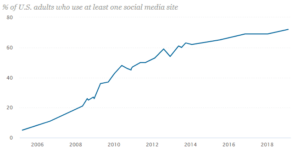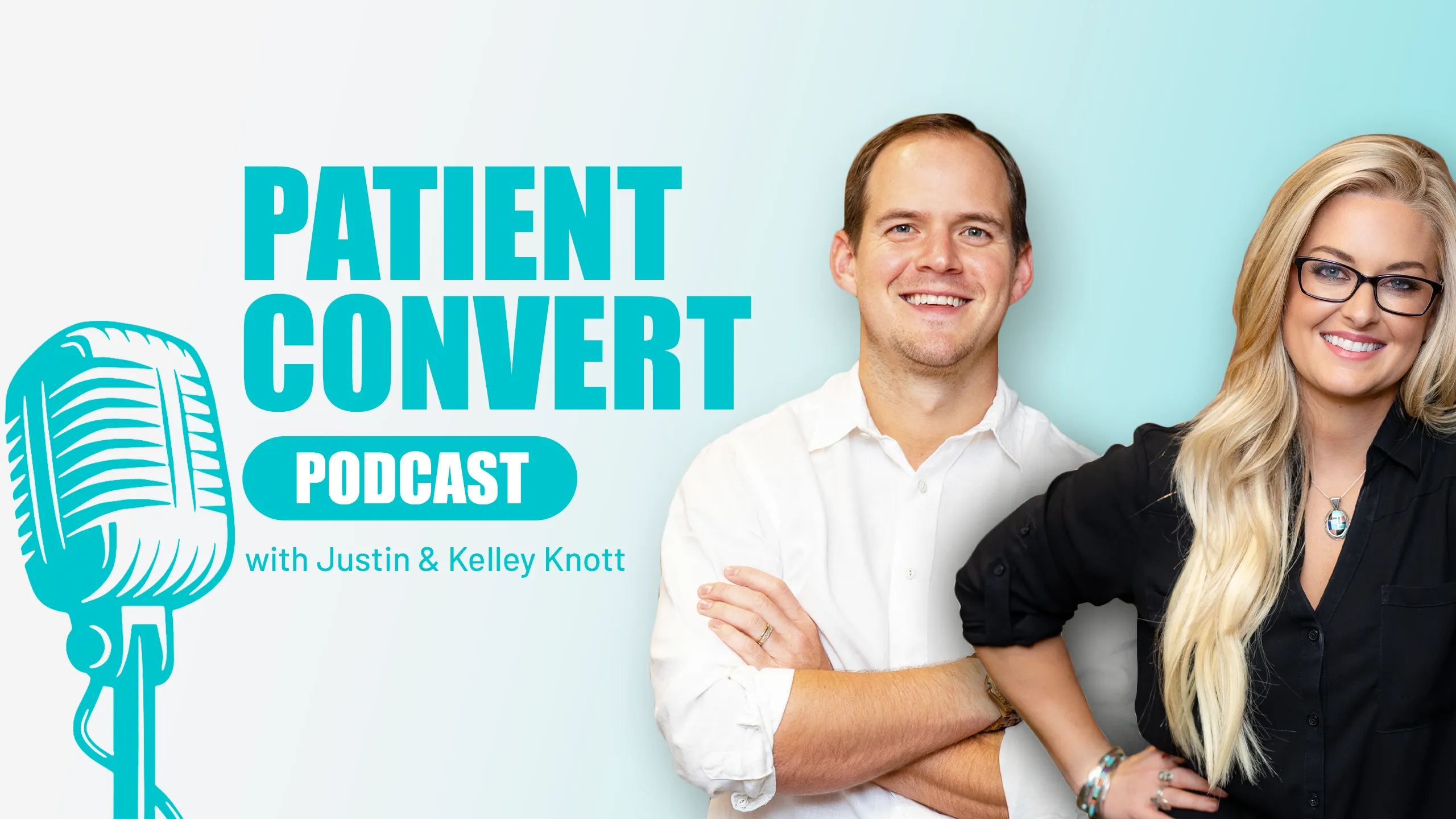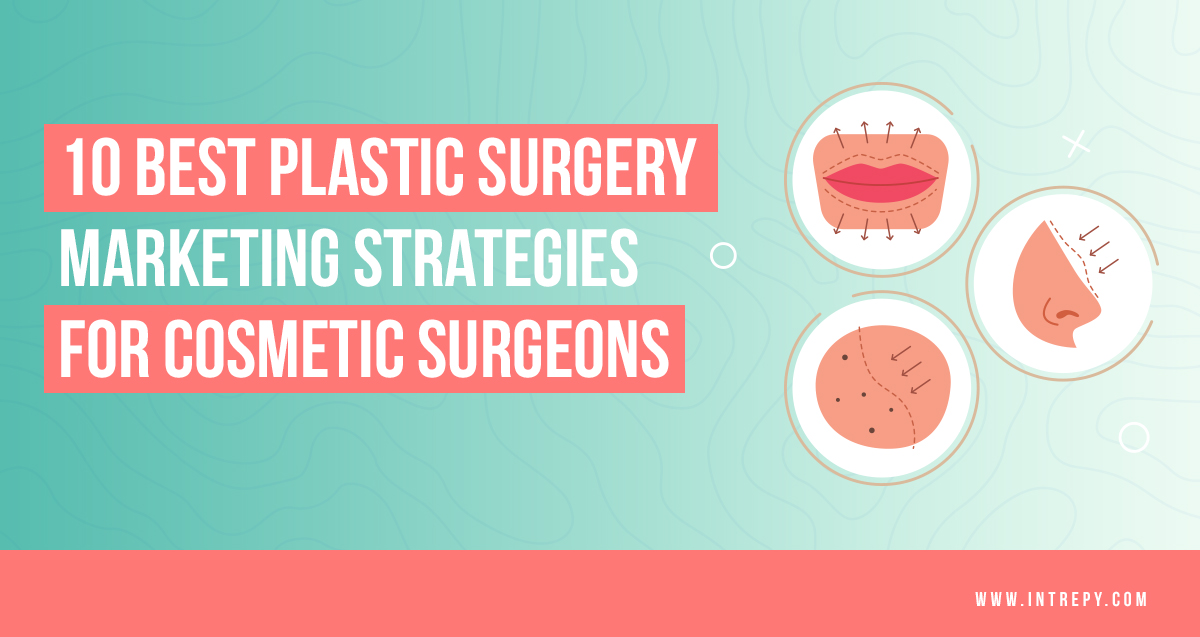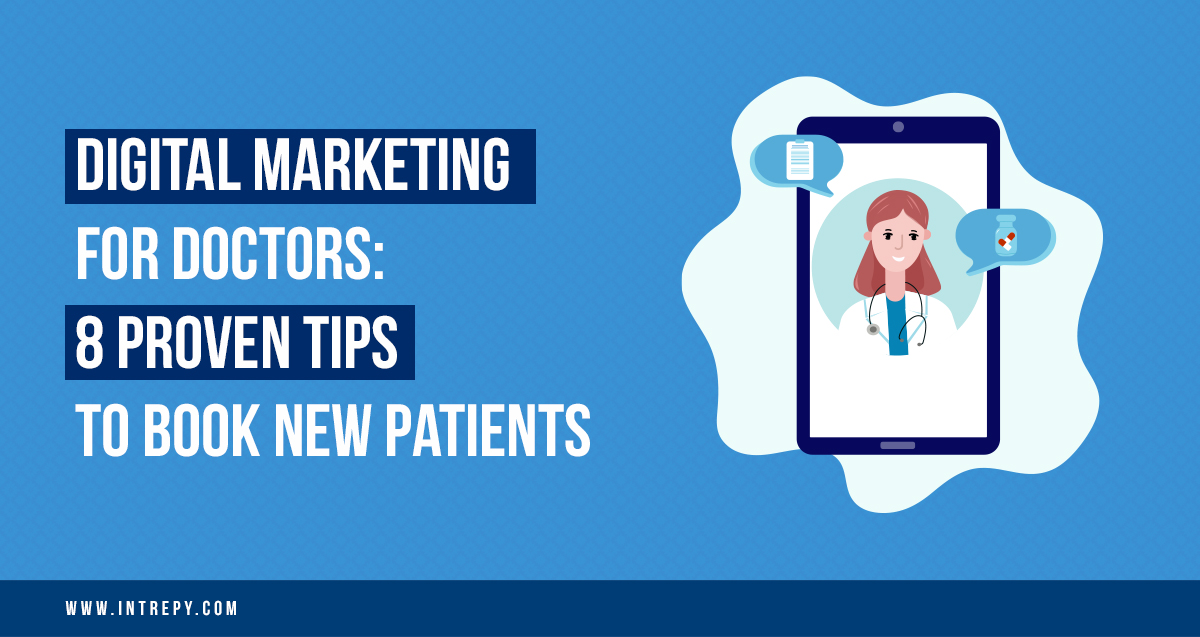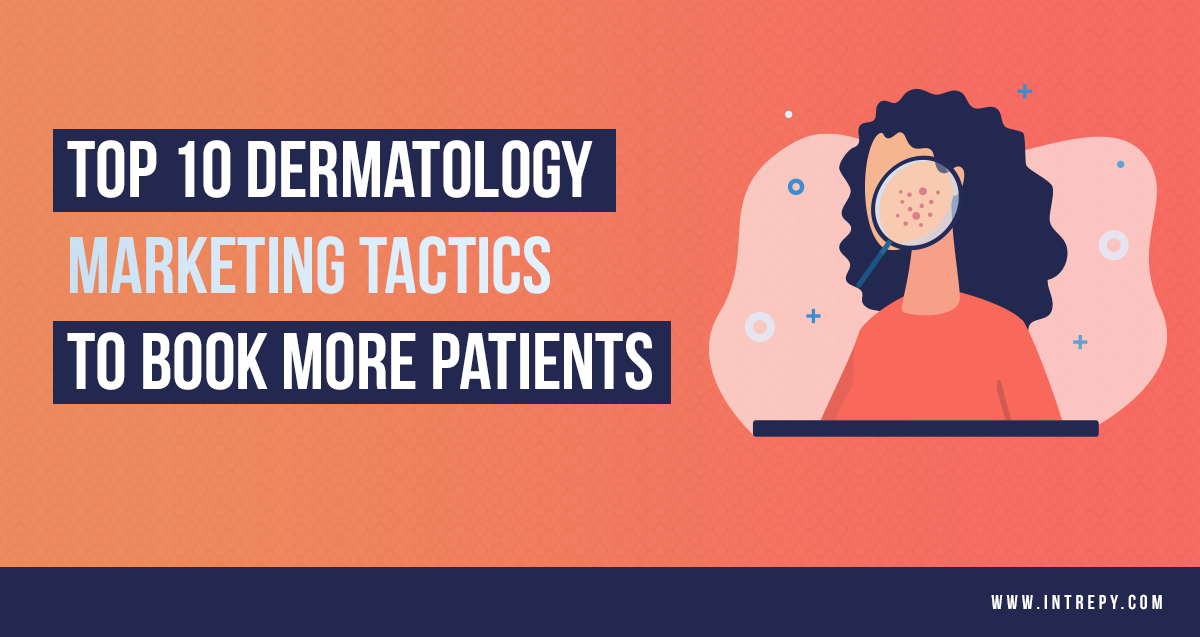33 Healthcare Marketing Statistics to Pay Close Attention to in 2020
Whether you are a physician, dentist, chiropractor, office manager or marketing in the healthcare space pay close attention to these statistics and how they should influence your approach to marketing your practice. Enjoy and if you have any statistics that would be a good fit for the post please email us and let us know!
1. According to Pew Research: in 2019 nearly 72% of adults use social media to connect with others, engage with news and content, share information and entertain themselves.
Meaning: Doctors and dentists need to be utilizing social media to engage and connect with their current and potential patient base.
2. According to Medium, infographics create 3X higher engagement, including likes & share, over any other type of content.
Meaning: Create infographics or convert some of your best content into infographics to increase engagement.
3. 47% of Internet users search for information about doctors or other health professionals. (Source Pew Research)
Meaning: Consumers are searching for your practice locally. Are they finding you or your competition? Invest in local medical SEO.
4. 78% of people searching on mobile devices for local business information make a purchase. (Source Neil Patel)
Meaning: When people perform local searches they are highly likely to convert into a paying customer. Therefore, showing up in their local search query is critical.
5. Social media usage is not just for young adults now, a breakdown of people with at least one social media profile as of 2016: age 18-29 – 90%, age 30-49 – 82%, age 50-64 – 69%, age 65+ 40%. (Source PEW)
Meaning: If your practice serves an older market social media is still an extremely important avenue to reach and engage with those patients.
6. It only takes 1-6 online reviews for 68% of potential patients to form an opinion about your practice. (Source RevLocal)
Meaning: Generating positive online reviews is essential to making a solid first impression and converting those people into patients.
7. Of all internet users, 66% look online for information about a specific medical problem or disease. (Source)
Meaning: Patients are searching online to learn more about specific medical alignments. Doctors should utilize their blog to answer questions and demonstrate expertise for certain medical producers and issues.
8. The top three search results receive 50% of all clicks on Google. (Source)
Meaning: If you want to generate organic website traffic it is essential to show up in the top three search results.
9. 56% of US adults use more than 1 of the 5 major social media platforms. (Source PEW)
Meaning: Practices need to diversify their online social media presence into more and one social media platform that best fits their target patient base.
10. 73% of people that receive online news from friends or family via emails and texts are likely to take a follow-up action. (Source Journalism)
Meaning: If you can create content that your patients want to share with friends and family there is a high probability of converting those new eyes into patients.
11. 81% of US adults say they now own a smartphone, this is up from 35% in 2011. (Source PEW)
Meaning: A solid medical marketing strategy focuses on reaching people on their mobile devices.
12. 9x more leads are generated from long-form blog posts than short-form blog posts. (Source Curata)
Meaning: Content marketing and SEO have shifted toward long-form posts. 300-400 word short form posts are becoming more and more of a waste of time and resources.
13. Healthcare advertising spend is expected to increase by 2021. (Source Beckers Hospital Review)
Meaning: Digital advertising in the healthcare world is here to stay, it’s not just good business: it is what is best for your medical practice.
14. 32% of US users utilize social media to post about their friends and family’s health and medical experiences. (Source PWC)
Meaning: People are willing to share their experiences online about your practice. Make sure you are leveraging this in a positive manner.
15. You can generate 3X the number of leads using a successful healthcare content marketing strategy and it costs 62% less than other marketing avenues. (Source DemandMetric)
Meaning: Content marketing is not only one of the most cost-effective marketing strategies but it can result in one of the highest levels of lead generation.
16. 74% of marketers said that email is their most effective distribution channel for new content. (Source Twitter Blog)
Meaning: Email is still king when it comes to distributing content. Therefore, do not ignore building a targeted email marketing list and email marketing automation strategy.
17. Facebook (68%) is still the most widely used social media platform, followed by #2 Instagram (28%), #3 Pinterest (26%), #4 LinkedIn (25%) & #5 Twitter (21%).
Meaning: Do not think Facebook is still an important part of your practice’s social media strategy? Think again.
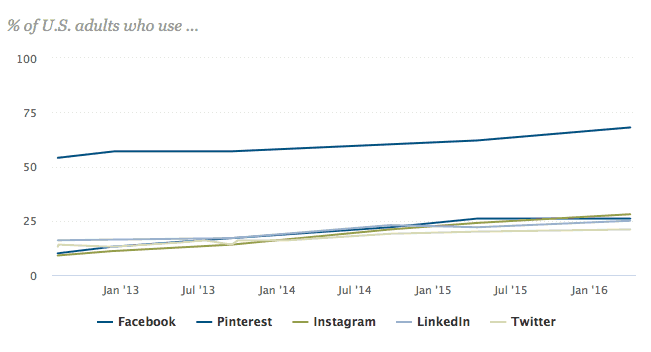
via PEW
18. Search engines result in 300% more traffic generation to websites than social media. (Source Ironpaper)
Meaning: Medical search engine optimization is one of the single most important things to focus on in a healthcare marketing strategy. Organic search can generate more website traffic than all other marketing efforts.
19. 80% of top Alexa websites were mobile adaptive. Meaning your need to make sure your website is mobile optimized. (Source Mobiforge)
Meaning: Optimizing your medical website for mobile use is no longer an added bonus. It is now essential to even show up high in organic search results.
20. 48% of people start their mobile research using a search engine. (Source Smart Insights)
Meaning: Search engines are the go-to when someone beings the process of finding a new physician or medical practice.
21. 45% of U.S. adults are now turning to mobile devices to get their news, up from 36% in 2016 and 21% in 2013. (Source PEW)
Meaning: Consumers are going to their mobile devices to see what the latest in medical news is.
22. By 2019, videos will account for 85% of internet traffic in the US. (Source Cisco)
Meaning: Video is the way of the future when it comes to how patients consume media. Therefore, start in 2018 rolling in video into your media strategy.
23. Peak usage times daily varies across device type. (Source Smart Insights)
Meaning: This is an important piece of information, especially, when it comes to digital advertising for a medical practice. Make sure you have optimized your ad delivery appropriately to increase reach and conversions.
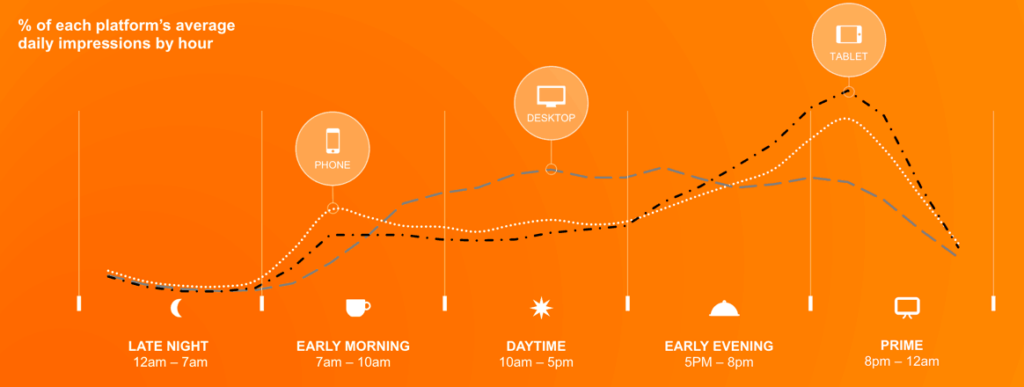
Image via Smart Insights
24. 92% of consumers read and utilize online reviews when looking for a local business. (Source RevLocal)
Meaning: Over 9 out of 10 patients turn to online reviews to help them decide which practice or doctor to visit. Therefore, make sure online reviews and reputation management is a focal point of your healthcare marketing strategy.
25. 5% of all searches are healthcare related (Source Google)
Meaning: People are going online to find the answers to their healthcare questions. You need to make it a point in 2020 to become an authority in your healthcare niche.
26. When posting on Facebook, video posts receive 135% more organic reach than photo posts. (Source Social Media Today)
Meaning: We have actually seen this stat go even way higher near 1,000%. Plain and simple video is the best when it comes to engagement, reach, etc.
27. According to Search Engine Land, Google owns 63.5% of all search engine queries.
Meaning: Google still dominates when it comes to search engines. In the medical SEO strategy for your practice devote the most time optimizing for their search algorithm first.
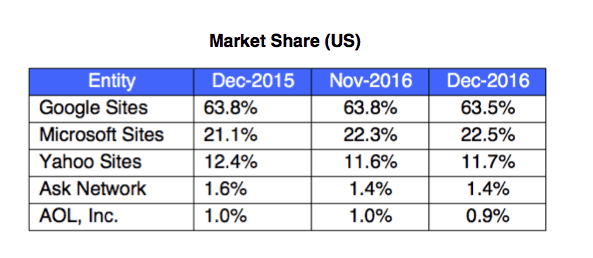
Photo via Search Engine Land
28. 56% of all internet traffic now comes from mobile devices. (Source SimilarWeb)
Meaning: Mobile has officially become the dominant force in search. Focus more of your marketing resources toward optimizing your SEO and website for mobile.
29. When consumers conduct a local search on their mobile device 50% visit the store within a day. (Source)
Meaning: Winning in local search does not just provide new website traffic but it can directly result in new patient visits in less than 24 hours
30. 3.1 billion more users will be on social media by 2021. Source (Statista)
Meaning: Social media needs to become a part of your medical marketing strategy.
31. Businesses make an average of $2 for every $1 they spend on Google Ads. (Source: Wordstream)
Meaning: When it comes to google advertising, you get it what you put out.
Healthcare Marketing Statistics Wrap Up
When evaluating, updating, revamping or creating your healthcare marketing strategy for 2020 make sure to take these healthcare marketing statistics into consideration. There are some interesting conclusions to draw, including: video is critical, online reviews really do matter, content needs to be long-form, mobile is the focus now and patients are looking for you in search. Content marketing is not an overnight success, it takes a well thought out, methodical strategy but if you are willing to invest in it the rewards can be substantial in new leads, new website traffic & substantial improvement in search results. We hope you found these healthcare marketing statistics helpful and as we said before feel free to share any more!
Intrepy Healthcare Marketing in Atlanta is an expert in health and medical marketing and advertising. We provide digital marketing and advertising to help healthcare organizations and practices reach new patients. Intrepy understands the life cycle of a patient, the pain points physicians experience and the techniques needed to effectively reach and grow a new patient base. Whether you are established and looking to spark new growth or you are just starting out we can help you create a full wrap marketing strategy to reach your targeted patient demographic. Give us a call 678-250-4757 or fill out our contact form.
